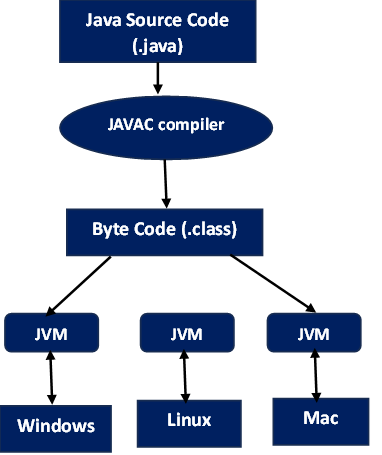Answer: Java is known as platform-neutral language or platform-independent language because of its design philosophy “Write Once, Run Anywhere”. “Write Once, Run Anywhere” (WORA), is a fundamental concept in Java Programming. This means that once we write a Java program, we can run it on any device or platform that has a Java Virtual Machine (JVM) installed, without modification.
Platform Neutral or Platform Independent means that while writing the program in java, we don’t need to care about on which Machine or platform the program will going to be executed. Java is platform-neutral language because it is designed to run on any operating system or hardware platform. Java’s platform neutrality is achieved through the combination of bytecode and the Java Virtual Machine, allowing Java applications to run on diverse platforms without modification.
Java is considered to be architecturally neutral because it is designed to be platform independent. Architecture neutrality means that the code written in Java is independent of the underlying hardware or operating system. As a result, any code written in Java can be compiled and run on any machine, regardless of what type of processor or operating system it uses. This makes the language platform independent.
This platform independence is achieved through the use of the Java Virtual Machine (JVM), which acts as an intermediary between the code and the underlying operating system.
When we compile a Java program, it is not compiled directly into machine code for a specific computer or operating system. Instead, it is compiled into an intermediate code called byte code. The bytecode is executed by the JVM, which is specific to each platform.
The JVM interprets bytecode, which is the compiled form of the Java code, and translates it into machine code that can be executed by the target platform’s hardware. This means that the same Java code can be run on different platforms without any need for modification or recompilation. Bytecodes are effectively platform-independent. The Java virtual machine takes care of all hardware-related issues so that no code has to be compiled for different hardware. The JVM serves as a layer of abstraction between the Java code and the underlying hardware and operating system.
